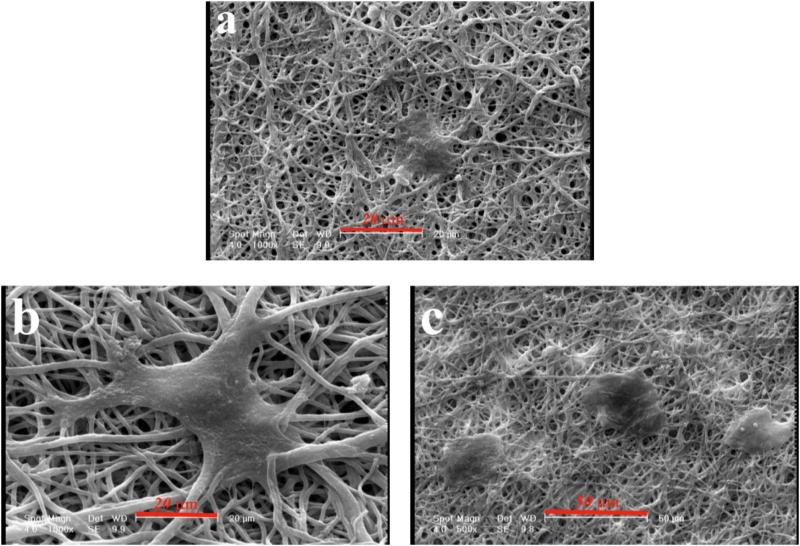- English
- فارسی
Fabrication and characterization of polycaprolactone fumarate/gelatin-based nanocomposite incorporated with silicon and magnesium co-doped fluorapatite nanoparticles using electrospinning method
Tahmineh Ahmadi, Ahmad Monshi, Vajihsadat Mortazavi, Mohammad Hossein Fathi, Shahriar Sharifi, Mahshid Kharaziha, Leila Khazdooz, Amin Zarei, Majid Taghian Dehaghani
The aim of this study was to fabricate and characterize biodegradable polycaprolactone fumarate(PCLF)/gelatin-based nanocomposite incorporated with the 0, 5 and 10 wt% silicon and magnesium co-doped fluorapatite nanoparticles (Si-Mg-FA) membranes using electrospinning process for guided bone regeneration (GBR) and guided tissue regeneration (GTR) applications. Results demonstrated the formation of randomly-oriented and defect-free fibers with various fiber sizes depending on the Si-Mg-FA content. Moreover, incorporation of 5 wt% Si-Mg-FA significantly improved the mechanical strength (1.5times) compared to the mechanical strength of PCLF/gelatin membrane and nanocomposite with 10 wt% nanoparticles. There was no clear difference between degradation rate of PCLF/gelatin and PCLF/gelatin with 5 wt% nanoparticles at 7, 14 and 28 days of immersion in phosphate buffer saline while 10 wt% nanoparticles significantly increased biodegradation of PCLF/gelatin, and no cytotoxic effect of membranes was seen. Finally, scanning electron microscopy (SEM) micrographs of fibroblast cells cultured on the samples demonstrated that the cells were completely attached and spread on the surface of nanocomposites. In summary, PCLF/gelatin membranes consisting of 5 wt% Si-Mg-FA nanoparticles could provide appropriate mechanical and biological properties and fairly good degradation rate, making it appropriate for GTR/GBR applications.

